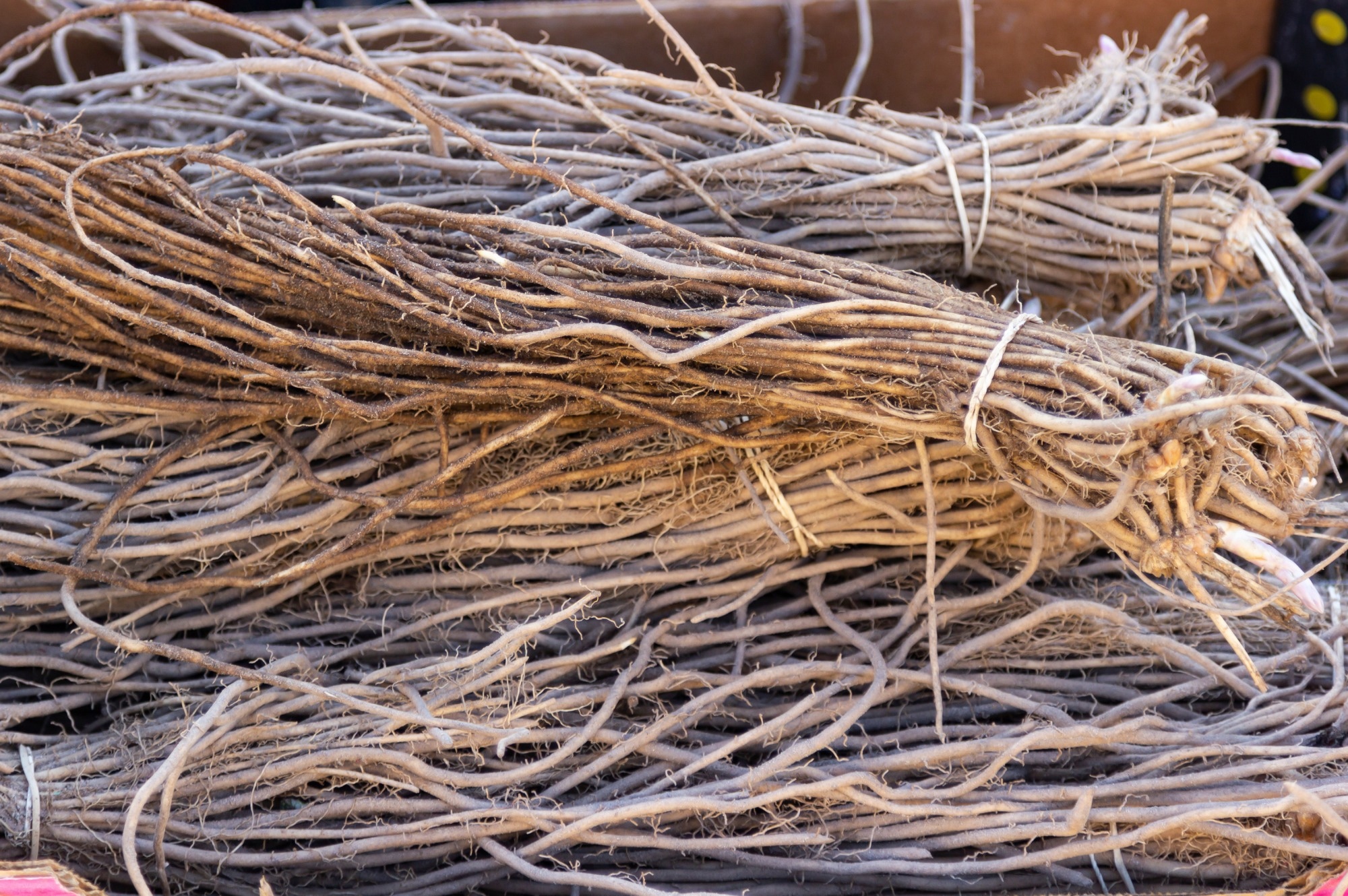The cosmetics and food industries are increasingly exploring natural additives to replace synthetic compounds. Synthetic emulsifiers are still used in the food, cosmetics, and detergent manufacturing industries. However, consumer awareness about their risks to health and the environment is increasing. As such, the search for natural compounds has gained considerable interest.
 Study: Applications of Saponin Extract from Asparagus Roots as Functional Ingredient. Image Credit: m.e.s.t.o.c.k / Shutterstock
Study: Applications of Saponin Extract from Asparagus Roots as Functional Ingredient. Image Credit: m.e.s.t.o.c.k / Shutterstock
Characteristics and Benefits of Saponins
Saponins are present in different plant-based foods; they can produce foam when agitated in an aqueous medium. Structurally, saponins have a central core of triterpene or steroid nature and a series of sugar chains. The amphiphilic nature of saponins makes them effective foaming and emulsifying agents.
Besides, saponins act as antifungal, anti-obesity, hypocholesterolemic, antihypertensive, anti-inflammatory, and antidiabetic agents. The bioactivity of saponins relies on their chemical structure, i.e., changes in the core or number/length of sugar chains could alter the bioactivity. Saponins are found in all parts of the asparagus plant and are particularly enriched in its roots and fruit.
About the Study: Methodology and Materials
In the present study, researchers examined the foaming and emulsifying abilities of asparagus root saponin extract (ARS) compared to commercial saponin-rich extracts. Asparagus roots were collected from production fields and processed to remove dirt and impurities. Subsequently, the extract was prepared following a patented protocol.
Quillaja (QS) and Tribulus terrestris (TS) saponin extracts were commercially obtained. The saponin content was determined, and the Folin-Ciocalteu assay measured the total phenolic content. Protein concentration was measured using elemental microanalysis. Critical micelle concentration (CMC) was determined using the Sudan III assay.
The emulsifying capacity of the extract was determined using the Wang and Kinsella method. Further, foaming capacity and foam stability were determined. The effects of pH, sucrose, and sodium chloride on the foaming and emulsifying properties of the extract were tested. The inhibitory effect of the extract on pancreatic lipase was compared to that of Orlistat, a drug approved for obesity.
Key Findings: Comparative Analysis of Saponin Extracts
In ARS, ≤ 17 different saponins were identified, many of which were previously described in several Asparagus species. Saponin content in ARS was roughly twice that of QS. The phenol content was lower than the saponin content in QS and ARS but similar to the saponin content in TS. ARS had a high protein concentration. The Sudan III assay revealed two distinct zones for each saponin extract.
At lower concentrations, absorbance increased with increasing concentrations but increased sharply beyond the CMC. QS had the lowest CMC (0.04 g/100 ml), whereas TS had the highest (0.094 g/100 ml). The CMC of ARS was 0.064 g/100 ml. The emulsifying capacity of ARS and QS extracts (at 0.5 g/100 ml) was 25% to 35% over the entire pH range.
Emulsion stability was high between pH 5 and 10 and reduced at pH 2. By contrast, TS only had a low capacity (5.3%) at pH 7.8. At a lower saponin concentration (0.03 g/100 ml), the emulsifying capacity of QS was the highest at neutral pH, and its stability was the highest at pH 5. Meanwhile, ARS had a lower emulsifying capacity than QS, and it was stable at pH 7.8.
At 0.5 g/100 ml, ARS exhibited a higher emulsifying capacity than QS when sucrose was the only additive in the solution. However, at the lower concentration, QS was the best emulsifier in the presence of both sucrose and sodium chloride. Sodium chloride increased the emulsifying capacity of each extract but reduced stability.
Saponin concentration had an impact on foaming properties. Specifically, foaming capacity increased at higher concentrations, whereas foam stability decreased. QS had the highest foaming capacity between 0.01 g/100 ml and 0.3 g/100 ml, but there were no differences between ARS and QS at 0.5 g/100 ml. Further, foaming capacity improved with increasing pH, and ARS and QS had similar results at medium or high pH.
Unlike emulsions, foam stability increased at extreme pH. The presence of additives impacted foam formation and stability. At 0.5 g/100 ml, ARS showed the highest foamability with sucrose and sodium chloride. However, additives decreased the foaming capacity of QS. At 0.03 g/100 ml, the foaming capacity of extracts was reduced.
Orlistat had the highest inhibitory activity against pancreatic lipase among all tested substances, with a half-maximal inhibitory concentration (IC50) of 0.052 mg/ml. The IC50 of ARS was 13-fold higher than that of Orlistat. TS and QS also had higher IC50 values (2.01 mg/ml and 1.64 mg/ml, respectively).
Conclusions and Potential Applications
Taken together, saponin extract from asparagus roots obtained through an environmentally friendly process could attract significant interest from the industry. The emulsifying and foaming characteristics of ARS were similar to those of QS, making it suitable for green-label foods. ARS could be used in carbonated beverages as foaming agents, dairy products as emulsifiers, desserts as stabilizers, and cosmetics as natural surfactants.
ARS also had a significant inhibitory activity against pancreatic lipase, suggesting potential applications in hypocholesterolemic and anti-obesity treatments. However, additional analyses on bioactivity and toxicity are required to corroborate these use cases.
Journal reference:
- Hamdi A, Viera-Alcaide I, Jiménez-Araujo A, Rodríguez-Arcos R, Guillén-Bejarano R. Applications of Saponin Extract from Asparagus Roots as Functional Ingredient. Foods, 2024, DOI: 10.3390/foods13020274, https://www.mdpi.com/2304-8158/13/2/274